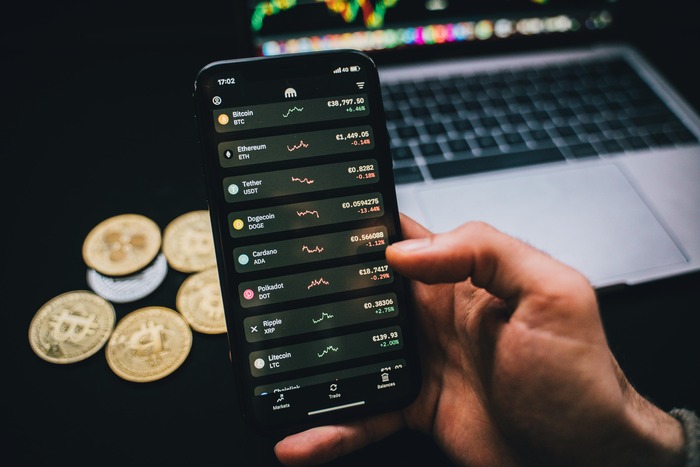Crypto Trading vs. Holding: Which Strategy Is Right for You?

Crypto Investing Strategy: Trading vs. Holding (HODLing)
Anyone entering the cryptocurrency market faces a fundamental strategic decision: should you actively trade digital assets to capture short-term profits, or adopt a long-term holding strategy based on belief in future appreciation? Both crypto trading and holding (often famously referred to as "HODLing") offer distinct pathways with unique advantages, disadvantages, risks, and requirements. Understanding these differences is crucial for aligning your approach with your financial goals, risk tolerance, time availability, and personality. This guide dissects crypto trading versus holding to help you determine which strategy, or blend of strategies, might be right for you.
Defining the Approaches: Active Trading vs. Passive Holding
Active Crypto Trading
This involves frequently buying and selling cryptocurrencies with the primary goal of profiting from short-term price fluctuations and market Crypto Volatility. Traders often rely on technical analysis (chart patterns, indicators), market news, and sentiment analysis to make decisions. Common trading styles include:
- Day Trading: Making multiple trades within a single day, aiming to profit from small intraday price movements. Positions are typically closed before the market closes (though crypto markets run 24/7).
- Swing Trading: Holding positions for several days or weeks to capture larger price swings or "swings" within an overall trend. Less time-intensive than day trading but still requires active monitoring.
- Scalping: An extreme form of day trading involving numerous ultra-short-term trades to skim tiny profits from minimal price changes. Requires intense focus and low transaction fees.
- (Position Trading, holding for months based on macro trends, blurs the line with holding but involves more active management based on major market shifts).

Long-Term Holding (HODLing)
Holding, or "HODLing" as affectionately known in the crypto community, is a passive investment strategy. It involves buying cryptocurrencies like Bitcoin or Ethereum and holding them for an extended period – typically months or years – regardless of short-term market volatility. HODLers generally believe in the fundamental value and long-term growth potential of their chosen assets. The term "HODL" originated from a typo of "hold" in a 2013 Bitcoin forum post and became a rallying cry signifying resilience during market downturns ("Hold On for Dear Life"). Explore more terms in our Common Crypto Terms Explained guide.
Trading vs. Holding: A Comparative Analysis
Let's compare these two strategies across key dimensions:
1. Potential Returns & Risk Profile:
- Trading: Offers the potential for quicker and sometimes larger percentage gains if timed correctly, especially using leverage (which also dramatically increases risk). However, it carries a significantly higher risk of substantial and rapid losses due to volatility, incorrect timing, or emotional decisions. Consistent profitability is notoriously difficult.
- Holding: Aims for substantial long-term appreciation, potentially yielding large multiples over several years if the chosen assets succeed. However, it requires enduring potentially deep and prolonged bear markets (drawdowns) and carries the risk that a chosen project might fail or become obsolete over the long run.
2. Time Commitment & Skill Required:
- Trading: Demands significant time commitment for market analysis, chart monitoring, news tracking, and trade execution. Day trading and scalping can be full-time jobs. Requires proficiency in technical analysis, understanding market psychology, and often mastering complex trading platforms and order types.
- Holding: Requires substantial upfront research (Do Your Own Research (DYOR)) to select assets with strong long-term potential. After the initial purchase, the ongoing time commitment is minimal, primarily involving periodic review and secure storage management (How To Store Crypto). Requires patience and conviction rather than technical trading skills.
3. Stress & Emotional Toll:
- Trading: Can be extremely stressful due to the constant need to make quick decisions under pressure, the risk of rapid losses, and the psychological challenges of dealing with winning and losing streaks. FOMO and panic selling are common pitfalls.
- Holding: Generally less stressful day-to-day. However, significant emotional resilience is required to hold through major market crashes (e.g., 50-80%+ drawdowns) without capitulating. Watching portfolio value decline significantly during bear markets tests conviction. Understanding cycles helps: How To Identify Crypto Bull Or Bear Market.
4. Tax Implications:
- Trading: Frequent buying and selling typically generate numerous short-term capital gains taxable events. In many jurisdictions (like the US), short-term gains are taxed at higher ordinary income tax rates. Meticulous record-keeping is essential.
- Holding: Selling assets held for over a specific period (e.g., one year in the US) often qualifies gains as long-term capital gains, which may be taxed at lower, preferential rates. This can offer significant tax advantages. Always consult local regulations and see our guide: Understanding Crypto Taxes.

Strategic Considerations & Risk Management
Both approaches require distinct risk management strategies:
- For Traders: Success hinges on discipline and managing risk on every trade. Key tools include:
- Stop-Loss Orders: Predetermined price points to automatically exit a losing trade.
- Take-Profit Orders: Predetermined price points to automatically lock in profits.
- Position Sizing: Risking only a small percentage of total capital on any single trade.
- Leverage Control: Using borrowed funds (leverage) amplifies both gains and losses; excessive leverage is a primary cause of trader blow-ups.
- Clear Trading Plan: Defining entry/exit criteria, risk-reward ratios, and market conditions for trading.
- For Holders: Risk management focuses on initial asset selection and long-term resilience:
- Fundamental Analysis (DYOR): Selecting projects with strong technology, clear use cases, competent teams, sound tokenomics, and active communities.
- Diversification: Spreading investments across several high-conviction assets to mitigate the risk of any single project failing.
- Secure Self-Custody: Using secure hardware wallets to protect long-term holdings from exchange hacks or failures.
- Dollar-Cost Averaging (DCA): Investing fixed amounts regularly helps mitigate the risk of buying large sums at market tops, especially useful for accumulating during bear markets.
- Patience: Resisting the urge to sell during downturns based on long-term conviction.
Risk Management Strategies Summarized:
| Strategy | Traders' Application | Holders' Application |
|---|---|---|
| Stop-Loss Orders | Essential: Automatically sell at a set price to limit loss on a specific trade (e.g., sell if price drops 5%). | Generally N/A: Focus is on long-term value, not short-term price triggers. |
| Position Sizing | Critical: Allocate only a small % of capital (e.g., 1-2%) per trade to survive losing streaks. | Relates to Diversification: Allocate capital across multiple assets to reduce impact if one underperforms severely. |
| Leverage Management | Avoid excessive leverage: High leverage drastically increases risk of liquidation on small adverse moves. | Generally N/A: HODLing typically does not involve leverage. |
| Diversification | Diversify across trading pairs/strategies, but maintain focus. Over-trading many assets can be detrimental. | Key: Diversify across fundamentally strong cryptocurrencies (and potentially other asset classes) to reduce concentration risk. |
| Research Focus | Technical analysis, chart patterns, short-term catalysts, news flow, market sentiment. | Fundamental analysis (team, tech, tokenomics, use case, adoption), long-term trends, project milestones. |
| Market Downturns | May use stop-losses, reduce position sizes, switch to stablecoins, potentially short-sell (advanced/risky). | Employ DCA to accumulate more at lower prices, focus on long-term thesis, ensure secure storage. |
Illustrative Examples: Learning from History
Examining past events and notable figures can offer insights:
- Holding Successes: Figures like Michael Saylor (MicroStrategy) exemplify strong conviction holding Bitcoin through volatility. Many anonymous early Bitcoin adopters who held through multiple bear markets saw life-changing returns. Similarly, Changpeng Zhao (CZ)'s strategic support and holding of BNB contributed to its ecosystem growth. Ethereum investors who staked ETH through the technical complexities of the Merge demonstrated long-term belief rewarded by network participation.
- Trading Risks: Major market crashes (like in May 2021 or during the FTX collapse) saw billions liquidated from overleveraged trading positions, highlighting the dangers of borrowed funds in volatile markets.
- Holding Risks: The collapse of projects like Terra/LUNA demonstrated that even holding seemingly popular assets can lead to devastating losses if fundamentals are flawed or unsustainable mechanisms fail. Holding highly speculative Altcoins or assets promoted by failed schemes (like the historical Bitconnect Ponzi) through bear markets often resulted in near-total losses.

The Role of Stablecoins in Both Strategies
Stablecoins (like USDC, USDT), designed to maintain a stable value (usually pegged to $1), are valuable tools for both traders and holders:
- For Traders: Stablecoins provide a safe haven to move into during high volatility, locking in profits from a trade or waiting for clearer market conditions without exiting the crypto ecosystem entirely. They are also essential for accessing many trading pairs on Crypto Exchanges and within DeFi.
- For Holders: During severe market downturns or periods of extreme uncertainty, converting some holdings into stablecoins can preserve capital while staying within the digital asset space, ready to reinvest when conditions improve. They also aid portfolio diversification by reducing overall volatility. The development of stablecoins contrasts with government efforts around Central Bank Digital Currencies (CBDCs).
Hybrid Approaches: The Best of Both Worlds?
Many investors don't strictly adhere to one camp. A common hybrid strategy involves:
- Core & Satellite: Maintaining a core portfolio of long-term holds (e.g., Bitcoin, Ethereum) while allocating a smaller percentage of capital to more active trading strategies to potentially boost overall returns or capitalize on short-term opportunities.
- Strategic DCA: Using DCA principles for long-term holdings but potentially increasing buy amounts during significant market dips perceived as accumulation opportunities.

Conclusion: Finding Your Fit – Trading, Holding, or Hybrid?
Choosing between actively trading cryptocurrency or adopting a long-term holding (HODLing) strategy is a deeply personal decision. There is no universally "correct" answer.
- Trading suits those with ample time for research and market monitoring, a strong understanding of technical analysis, high-risk tolerance, and excellent emotional discipline.
- Holding is generally better for those with a long-term conviction in crypto's potential, limited time for active management, a preference for lower stress, and the patience to endure market cycles.
A hybrid approach can offer balance. Regardless of your chosen path, success requires continuous learning, rigorous Do Your Own Research (DYOR), disciplined execution, effective risk management, and understanding your own psychological tendencies. Start small, learn continuously, and adapt your strategy as you gain experience and as the market evolves.







